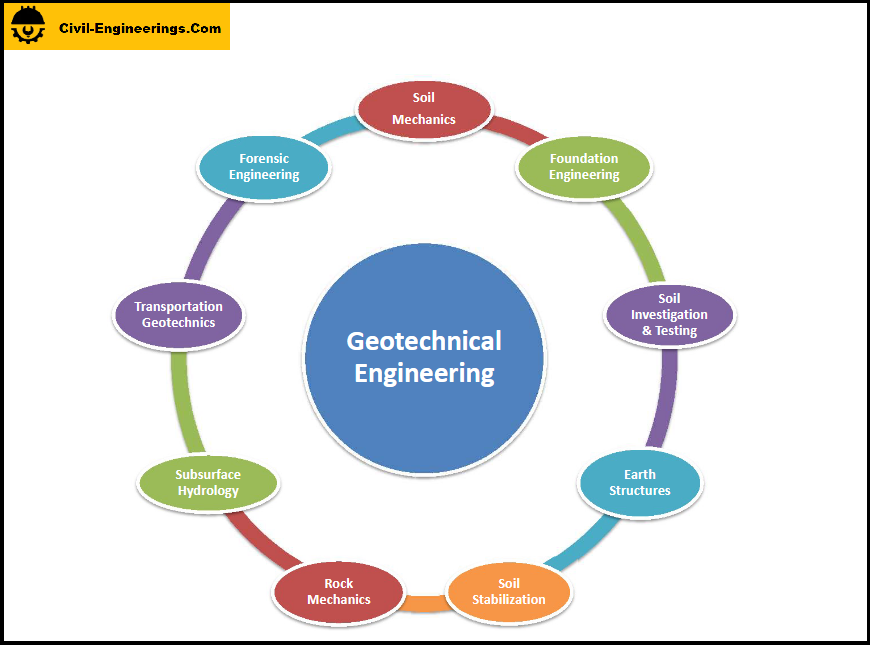9 Easy Facts About Geotechnical Engineering For Construction Projects Shown
Getting My Geotechnical Engineering For Construction Projects To Work
Table of ContentsGeotechnical Engineering For Construction Projects for DummiesIndicators on Geotechnical Engineering For Construction Projects You Need To KnowSome Known Facts About Geotechnical Engineering For Construction Projects.The 9-Minute Rule for Geotechnical Engineering For Construction Projects7 Simple Techniques For Geotechnical Engineering For Construction ProjectsAll about Geotechnical Engineering For Construction Projects
These attributes should be analyzed by geotechnical engineers to anticipate their movements under different scenarios., making this analysis required., in enhancement to just how they engage with buildings that have actually been erected on or within them, is one of the main descriptions for why geotechnical engineering is important.
Ecological defense is achieved through geotechnical engineering. Competence in air, water, and dirt top quality upkeep is put to use by geotechnical engineers to reduce the adverse results of jobs.
To sum up, geotechnical engineering is a crucial discipline that preserves the durability and integrity of civil infrastructure. Geotechnical designers add to making structure projects effective all over the world by recognizing the behaviour of earth products and applying appropriate planning strategies.
The smart Trick of Geotechnical Engineering For Construction Projects That Nobody is Discussing
By taking a look at soil, rock, and subsurface conditions, geotechnical engineers give vital insights that assist in the design, building and construction, and upkeep of structures and facilities.

The Ultimate Guide To Geotechnical Engineering For Construction Projects
Lab testing: Identifying the properties of dirt and rock. A number of high-profile building projects have successfully used geotechnical engineering to guarantee their security and safety.
As a leader in geotechnical engineering, BECC Inc. is devoted to delivering cutting-edge and efficient solutions that fulfill the highest criteria of high quality and security., a mechanical engineer and rock hound.
The Best Guide To Geotechnical Engineering For Construction Projects
Terzaghi likewise created the structure for concepts of bearing capability of structures, and the theory for prediction of the price of settlement of clay layers as a result of combination. Later on, Maurice Biot totally created the three-dimensional soil loan consolidation theory, extending the one-dimensional design formerly established by Terzaghi to more general hypotheses and presenting the collection of fundamental formulas of Poroelasticity.
Geotechnical designers investigate and figure out the properties of subsurface problems and materials.
Some Ideas on Geotechnical Engineering For Construction Projects You Should Know
Geologic mapping and analysis of geomorphology are commonly completed in assessment with a rock hound or engineering rock hound. Subsurface expedition usually entails in-situ screening (for instance, the common infiltration examination and cone infiltration examination). The excavating of test pits and trenching (specifically for situating faults and slide aircrafts) might also be utilized to discover dirt conditions at depth. , which uses a thick-walled split spoon sampler, is the most common way to gather disrupted samples.

Commonly, the user interface's exact geometry is unidentified, and a streamlined user interface geometry is presumed. web Limited inclines require three-dimensional models to be analyzed, so most inclines are analyzed thinking that they are definitely vast and can be represented by two-dimensional models.
Facts About Geotechnical Engineering For Construction Projects Uncovered
The observational method might be referred to as complies with: General expedition adequate to establish the rough nature, pattern, and residential properties of deposits. Assessment of the most likely problems and one of the most unfavorable imaginable discrepancies. Developing the design based upon a working theory of actions anticipated under the most likely problems. Choice of amounts to be observed as construction profits wikipedia reference and calculating their anticipated values based on the working hypothesis under the most undesirable conditions.
Measurement of quantities and evaluation of real problems. Layout modification per real problems The empirical approach is ideal for construction that has actually currently started when an unexpected development occurs or when a failing or mishap looms or has already happened. It disagrees for tasks whose layout can not be modified during building and construction.